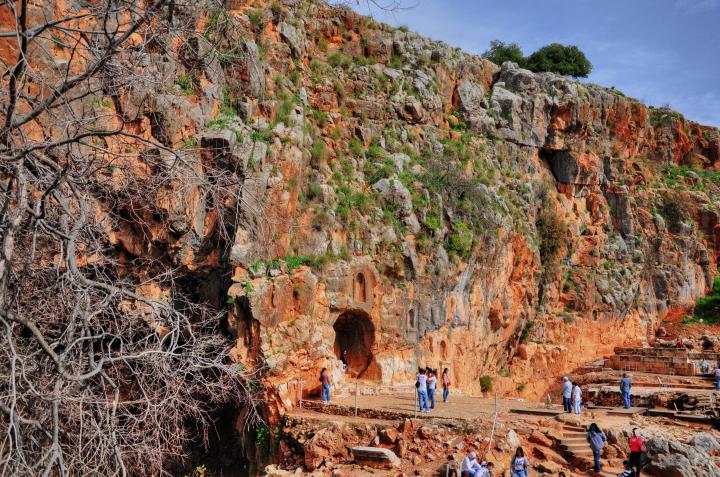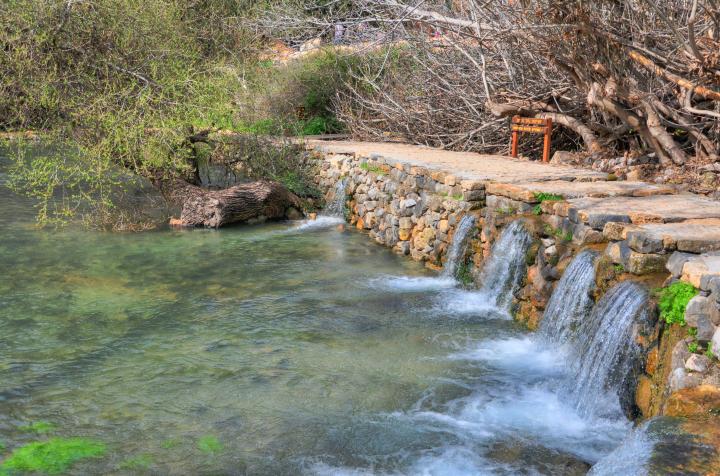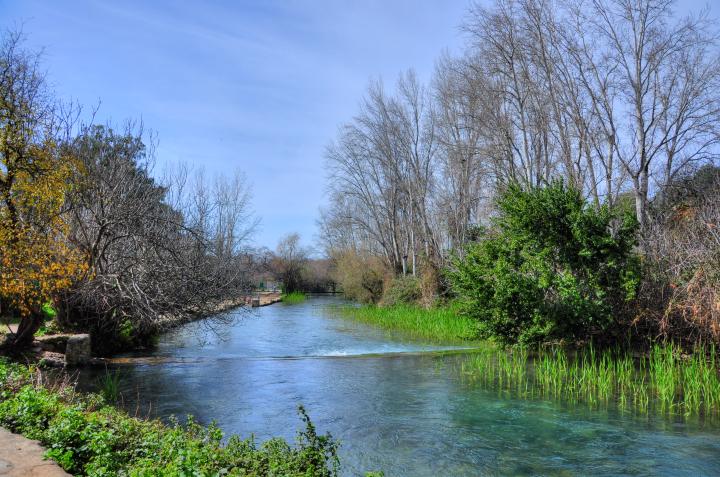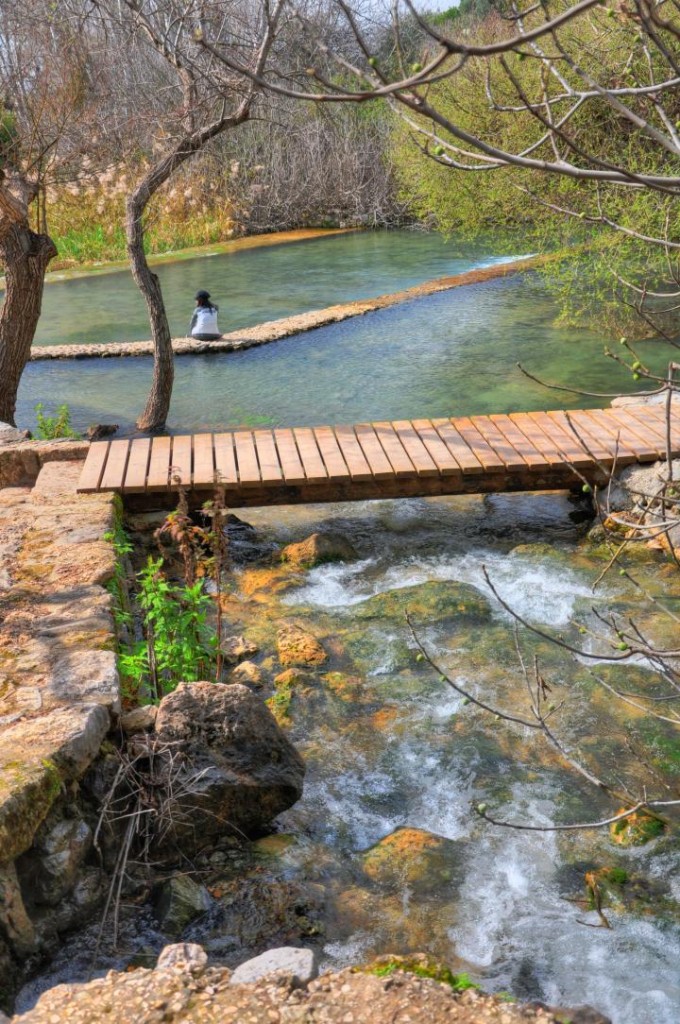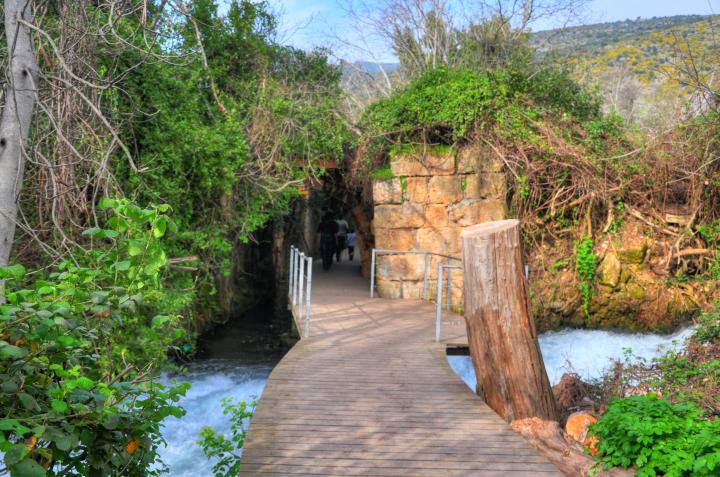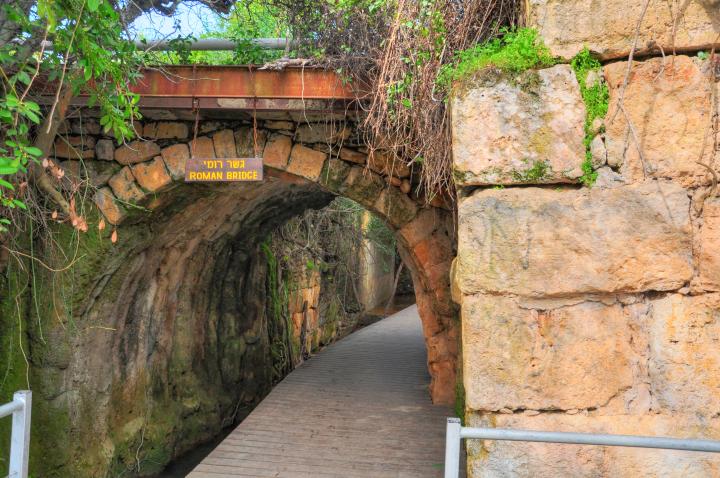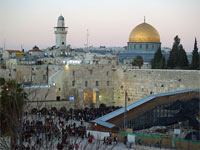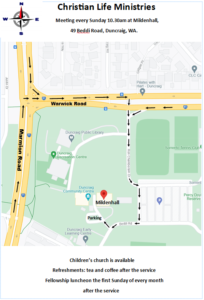Banias
Banias
Banias is an archaelogical site by the ancient city of Caesarea-Philippi. It is located at the foot of Mount Hermon in the Golan Heights. The city was the location of Panion (the Greek god “Pan”). The region is named after the deity associated with the grotto and shrines close to the spring called “Paneas”.
Josephus writes about this (Wars 1 21 3) : “Now the fountains of Jordan rise at the roots of this cavity outwardly; and, as some think, this is the utmost origin of Jordan”.
Paneas-Caesarea
It was the centre of pagan worship of the god Pan. By the early first century, Caesarea Philippi (named in 2 AD by Herod Philip in honour of Caesar Augustus) was reviled by orthodox rabbis, and it was taught that no good Jew would ever visit there.
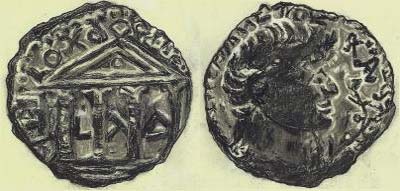 Philipp’s Coin with Tiberias, minted in Banias; dated 31AD
Philipp’s Coin with Tiberias, minted in Banias; dated 31AD
with Tetra-style temple (Augusteum).
Philipp made Banias his capital city, naming it Paneas-Caesarea, honoring the Roman Caesar Tiberias – son of Augustus. In order to distinguish the name (Caesarea) from the great harbor city of maritime-Caesarea, the northern city was known as “Caesarea-Philippi“. The city was greatly expanded – being the capital of a rich region, and benefitting from the prosperous years under the Romans. Philipp was King until his death (33AD).
‘Rock of the Gods’
This city, which sits at the foot of Mount Hermon, butts up against a large cliff, referred to as the ‘Rock of the Gods’, in reference to the many shrines built against it. Shrines to Caesar, Pan and another god (the fertility goddess Nemesis) were all built up against this cliff.
In the centre of the Rock of the Gods is a huge cave, from which a stream flowed (after 19th century earthquakes, the stream began flowing out from the rock beneath the mouth of the cave). This cave was called the “Gates of Hades”, because it was believed that Baal (the ruler of the underworld) would enter and leave the underworld through places where water came out of it.
Jesus visited this place around 29 A.D. Jesus said:
I will build will build my church and the gates of hades will not prevail against it. (Matt. 16:18)
The Grotto
The Grotto (cave) of God Pan and the temples and ritual courtyards around it are seen in the photo. This section is located on an elevated terrace above the springs. This was the sacred place of the city. The foundations of a number of temples and ritual courtyards are located around the cave. The Greeks sanctified the cave and dedicated it Pan, the God of shepherds and flocks, mountainside, hunting and rustic music. This gave the city its name – Panium or Panias – which is pronounced in Arabic as Banias.
The cave of Pan became a centre of pagan activity starting from the Hellenistic period (from 3rd C BC). Animal sacrifices were thrown into the cave. The sacred sanctuary (temenos) received a higher status after Herod constructed a temple in honor of Augustus (16BC). Additional temples and rock-hewn niches and inscriptions were added.
Refreshing Waters
Another view of the refreshing waters of the springs:
Into the Valley
The trail continues along the bank of the stream, which narrows down and pushes down south into the valley.
Banias Stream
The Banias (Hermon) stream flows to the west and then turns to the south, and is the most eastern of the Jordan river sources (the other are the Dan and Senir-Hasbani). It supplies 128 million meter cube water per year, compared to 240M and 152M for the other two sources. All sources meet near Kibbutz Sde Nehemia.
Gushing Waters
The Banias stream continues downstream to the south-west. A nature trail along the stream leads either to the falls – on the longer path – or on a shorter circular path around the walls of the ancient city and back to the entrance. The photo shows the site where the gushing waters from the Banias springs (flowing right to left) meet the calm waters of the Guveta stream (in the centre), which flow from the mountains.
Roman Bridge
Under the old road connecting to the Golan, is the base of a Roman bridge. The photo below shows the bridge from the south side. This was once a section of the ancient Roman road that led to Damascus.
Acknowledgements: References.


